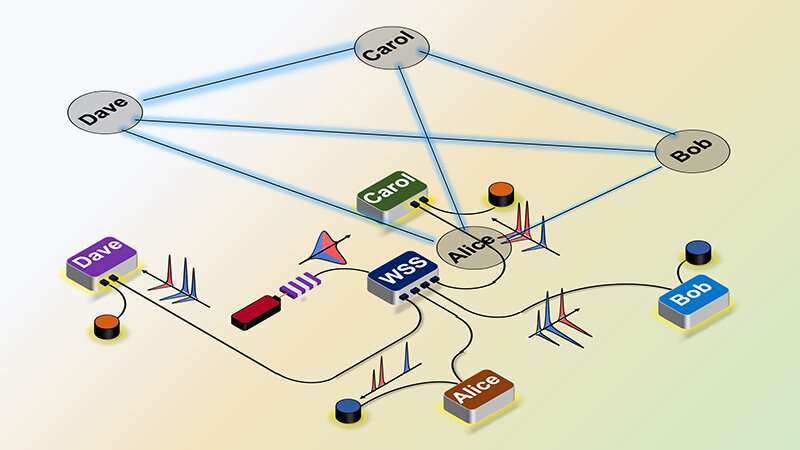Proptech disruption trends: innovation in the real estate space

Users have found that RPA can learn how to complete administrative tasks,
leaving more time to spend on duties that require a more human touch, such as
customer service. Tom Reiss, CEO of Roby AI, explained: “By learning how a
user carries out a task, RPA can then be custom built and combined with tasks
which require an element of human touch. This approach means that companies can
become hugely efficient, and staff are no longer weighed down with laborious
tasks. “Whilst some companies have traditionally feared proptech, this kind of
clever technology can be implemented easily alongside existing structures. In
turn, creating minimal disruption to the business and maximum output when it
comes to efficiency, cost saving and employee satisfaction.” ... “Video
surveillance can be performed in real time, or data can be collected and stored
for the purpose of evaluation when required.” Lodhia went on to explain how the
cloud has further facilitated safety measures, which have benefitted from remote
monitoring and management, particularly during the Covid-19 pandemic. “The
impact of cloud technology has had a dramatic impact on proptech, and there are
two main benefits,” Lodhia said.
How the Digital Twin Drives Smart Manufacturing
One of the initial areas of focus for implementation of the digital twin has
been asset lifecycle management (ALM). Maintaining assets in the field has
traditionally been a time-consuming and costly task, but critical to equipment
and system uptime. Today, maintenance technicians can leverage technologies like
augmented reality (AR) that allows them to access virtual engineering models and
overlay these models over the physical equipment on which they are performing
maintenance using specialized AR goggles or glasses. This enables them to use
the most accurate and up-to-date engineering, helping ensure that the correct
maintenance and performance specifications are performed efficiently. These same
maintenance methods, based on merging of virtual and physical environments, can
be applied to factory production systems, machines, and work cells. In addition,
products, production systems, machines, and work cells can be simulated
virtually to test and validate physical systems prior to assembly and
installation. Moreover, the virtual commissioning of production automation—an
established technology and process—is merging with the more expansive scope of
the digital twin.
What's between your clouds? That's key to multi-cloud performance
First, you need management and monitoring layers. These include AIOps, security
managers, governance tooling, and other technologies that can manage and control
heterogeneous cloud deployments. The management and monitoring layers are just
as important—perhaps even more so—than are the native services that run on those
public clouds. These layers of software systems become the jumping-off point for
modern cloud operations, and they can operate without leveraging cloud-specific
systems as you move forward. Second, public cloud providers are beginning to
invest in cross-cloud solutions. Most won't mention the word multi-cloud, but
they plan to support this architecture, nonetheless. This puts the nail in the
coffin of less complex, single-cloud deployments that do not take advantage of
best-of-breed. Some people remain skeptical that public cloud providers will
build technology that will integrate with the competition, but the providers
really have no other choice. Remember when Apple and Microsoft devices could not
communicate? Cloud vendors do. This is not a new trend. Enterprises will
continue to move to multi-cloud as the preferred cloud deployment platform, and
that move is to the middle.
How We’ll Conduct Algorithmic Audits in the New Economy

Lack of transparent accountability for algorithm-driven decision making tends to
raise alarms among impacted parties. Many of the most complex algorithms are
authored by an ever-changing, seemingly anonymous cavalcade of programmers over
many years. Algorithms’ seeming anonymity -- coupled with their daunting size,
complexity and obscurity -- presents the human race with a seemingly intractable
problem: How can public and private institutions in a democratic society
establish procedures for effective oversight of algorithmic decisions? Much as
complex bureaucracies tend to shield the instigators of unwise decisions,
convoluted algorithms can obscure the specific factors that drove a specific
piece of software to operate in a specific way under specific circumstances. In
recent years, popular calls for auditing of enterprises’ algorithm-driven
business processes has grown. Regulations such as the European Union (EU)’s
General Data Protection Regulation may force your hand in this regard. GDPR
prohibits any “automated individual decision-making” that “significantly
affects” EU citizens. Specifically, GDPR restricts any algorithmic approach that
factors a wide range of personal data -- including behavior, location,
movements, health, interests, preferences, economic status, and so on—into
automated decisions.
A quantum internet is closer to reality, thanks to this switch

For a quantum internet, forming connections between users and adjusting
bandwidth means distributing entanglement, the ability of photons to maintain a
fixed quantum mechanical relationship with one another no matter how far apart
they may be to connect users in a network. Entanglement plays a key role in
quantum computing and quantum information processing. "When people talk about a
quantum internet, it's this idea of generating entanglement remotely between two
different stations, such as between quantum computers," said Navin Lingaraju, a
Purdue Ph.D. student in electrical and computer engineering. "Our method changes
the rate at which entangled photons are shared between different users. These
entangled photons might be used as a resource to entangle quantum computers or
quantum sensors at the two different stations." Purdue researchers performed the
study in collaboration with Joseph Lukens, a research scientist at Oak Ridge
National Laboratory. The wavelength-selective switch that the team deployed is
based on similar technology used for adjusting bandwidth for today's classical
communication.
What is a solutions architect? A vital role for IT-business alignment
A solutions architect is responsible for evaluating an organization’s business
needs and determining how IT can support those needs leveraging software,
hardware, or infrastructure. Aligning IT strategy with business goals has become
paramount, and a solutions architect can help determine, develop, and improve
technical solutions in support of business goals. A solutions architect also
bridges communication between IT and business operations to ensure everyone is
aligned in developing and implementing technical solutions for business
problems. The process requires regular feedback, adjustments, and
problem-solving in order to properly design and implement potential solutions.
Solution architecture itself encompasses business, system, information,
security, application and technology architecture. Some examples of solutions
architecture include developing cloud infrastructure for efficiency,
implementing microservices for ecommerce, or adopting security measures for
data, systems, and networks. While the scope of the job can vary depending on a
business’ specific needs, there are certain responsibilities, skills, and
qualifications that solutions architects will need to meet to get the job.
Digital transformation: 5 new realities for CIOs

We’re not just working from home but also attending school, shopping, and
conducting all essential communications without ever walking out the front door.
Many jobs that we previously thought were only doable from the job site can now
be done remotely. Product development teams now have their living rooms and
garages full of parts, equipment, etc., harkening back to the early start-up era
for companies like Apple, HP, Microsoft, and others. Of course, the more we do
from home, the more our finite bandwidth resources are taxed. Traditional peak
hours for internet usage were in the evening, but with everyone home 24/7,
streaming everything simultaneously, the Wi-Fi is straining to remain stable
during an employee’s more ideal work hours. We must equip WFH employees with the
technology and bandwidth they need to be productive and efficient. Allocate
budget to upgrade employees’ home networks to premium bandwidth. Nothing causes
more headaches than choppy bandwidth on Zoom when trying to support clients. ...
With the move to the cloud and WFH, we’re now forced to manage a high-threat
environment every time an employee fires up a laptop or mobile phone and taps
into the company network or cloud resources.
AI in Hydroponics: The Future Of Smart Farming

AI-driven’ Smart Hydroponics’ can determine optimum growth for a plant through a
combination of hardware setup and a software tool that can recreate its growth
trajectory. Insights are generated from data obtained by sensors in the
hardware. The sensing hardware is divided into three categories, each of which
is strategically placed within the hydroponics farm. They sit near the plant
roots and collect data about the crop vitals, pH levels, electrical conductivity
levels, and nutrient supply. They also detect light density, temperature, and
humidity levels. A visual camera also checks the growing plants for colouration
and feeds the data to the AI software. On the other hand, insights about the
precise nature and needs of the products are generated through machine learning.
The AI software system works like the brain behind the entire Hydroponic farm.
It can choose between different types of LED lighting and modulate light
intensity. It can even turn on a suitable irrigation system. It drives
end-to-end automation so that fewer manual tasks are delegated. Currently, AI in
Hydroponics in India may be in a fledgeling state.
Fintech disruption trends: a changing payment landscape on the horizon

With such a dramatic drift shift to digital commerce, largely accelerated by the
impact of Covid-19, demand for software-based payment technology will
exponentially increase, according to Justin Pike, founder and chairman of
MYPINPAD — the software-based payments company. In this digital world the
consumer is opened up to a variety of choice that can’t be replicated in the
physical world and competition is fierce. “Consequently, consumer facing brands
have recognised the criticality of technology that can significantly improve the
customer experience,” says Pike. He believes that software-based payment
technology forms the missing piece of the puzzle in terms of innovating and
improving the customer experience in a remote environment, where the customer
experience is completed on mobile devices. “Standardisation of the payment
experience through software, across all channels (both online and offline) is
where we are rapidly heading. This innovation will bring a myriad of benefits
for both consumer and brand, but it absolutely must be built on a foundation of
security,” Pike continues. “For merchants, the opportunity to reach new
markets and customers is too good to miss.
Arguing your way to better strategy
Iterative visualization is achieved by creating a strategy map, which tracks a proposed strategy’s causal path backward from its desired outcome to the factors required to make it happen. The authors illustrate this process by producing a strategy map based on statements about Walmart’s low-cost model, which enabled the retailer to attract customers and vanquish competitors in the pre-digital economy. Working backward from the desired outcome of low costs, they map two of its enablers: operational efficiencies and a bargaining advantage over suppliers. In turn, they enumerate the enablers of those enablers, which for bargaining include high-volume purchasing, negotiating prowess, and private labels. And so on. A strategy map is only the first step in making a strategy argument. “At this stage,” Sørensen and Carroll explain, “these statements are just unfounded claims in the strategy argument, and their veracity and importance have yet to be demonstrated.” That work begins in the second set of activities — logical formalization. Logical formalization entails testing the validity and soundness of the premises underlying the statements in a strategy map.
Quote for the day:
"If you only read the books that
everyone else is reading, you can only think what everyone else is
thinking." -- Haruki Murakami
No comments:
Post a Comment